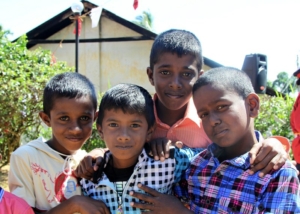Poverty in Sri Lanka
 Sri Lanka is one of many countries that grapples with the economic fallout from the COVID-19 pandemic. The U.N. Development Programme (UNDP) estimates that 125 million people worldwide sank into poverty over the first 18 months of the COVID-19 outbreak. Russia’s invasion of Ukraine contributed to an additional 71 million people falling into poverty. Sri Lanka is facing staggering levels of poverty and is exploring resolutions to combat the decline.
Sri Lanka is one of many countries that grapples with the economic fallout from the COVID-19 pandemic. The U.N. Development Programme (UNDP) estimates that 125 million people worldwide sank into poverty over the first 18 months of the COVID-19 outbreak. Russia’s invasion of Ukraine contributed to an additional 71 million people falling into poverty. Sri Lanka is facing staggering levels of poverty and is exploring resolutions to combat the decline.
Rising Economic Challenges
The primary economic crisis in Sri Lanka started with attempted resolutions by President Mahinda Rajapaksa. After the Sri Lankan civil war ended in 2009, the president took out huge loans from foreign creditors — including China — to pay war expenses and build more infrastructure. The 2019 Easter bombings and COVID-19 pandemic demolished Sri Lanka’s tourism sector, one of the country’s main sources of revenue, causing it to default on its loans.
With China holding about 26% of Sri Lanka’s debt, the country is now in ‘debt trap diplomacy’. Additionally, 56% of the debt is held by private banks with high-interest rates. Most of this debt was accrued for infrastructure projects that did not yield high enough returns to repay the loans.
Humanitarian Crisis and Sri Lanka Poverty
Between 2020 and 2022, poverty in Sri Lanka rose from 13.1% to 25%. That number continues to rise, as the effects of the Russian-Ukrainian war compound the existing lack of access to resources, such as food and fuel. Inflation rose 46% in 2022, with recent government resolutions causing massive job loss within Sri Lanka.
Agriculture, another huge sector of Sri Lanka’s economy, took a hit in 2021 when the president introduced a ban on chemical fertilizers in an effort to promote “all organic” farming. This disruption of Sri Lanka’s booming tea industry, alongside disrupted supply chains — has created major food insecurity, with 66,000 people suffering from severely acute food insecurity.
The Future for The Children of Sri Lanka
With the alarming lack of resources, the rise of malnutrition is projected to heavily affect children. Lack of funding for clean drinking water projects, as well as the importation of water treatment chemicals as a stopgap measure, leaves Sri Lankan children extremely vulnerable to a variety of diseases. All of these issues, alongside schools remaining closed until 2022, leave an estimated 4.8 million children of Sri Lanka with increased mental health and psychosocial issues in addition to living in deep poverty.
UNICEF’s Core Commitments for Children in Humanitarian Action supports access to essential health care services for children and women. It ensures the maintenance of government functions in addition to access to clean water and solutions to child health risks.
Sri Lanka has shown incredible resilience during these hard times. The “Leave No One Behind” initiative started by the Sri Lankan government and the Welfare Benefits Board (WBB) provides volunteer relief through community kitchens, distribution of nutrition packs and support to access medicine.
– Isabella Polo
Photo: Flickr
